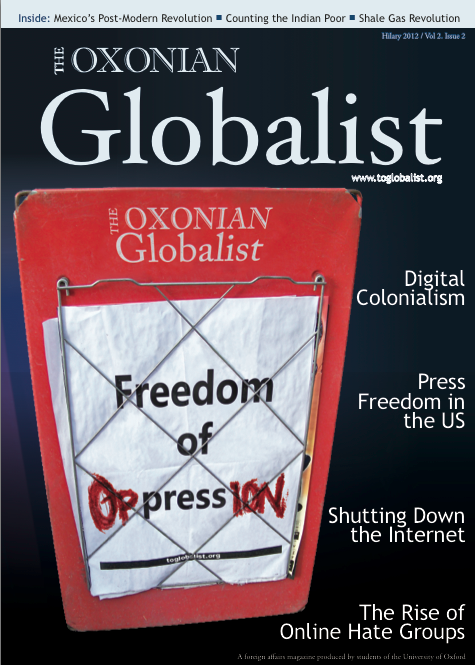WHEN all 33 Chilean miners were released from the San José copper mine in October 2010, after two months of entrapment, the world rejoiced over the happy ending to the story they had followed throughout the summer. But the findings of an official investigation of the San José disaster – released in March – suggests that the case has more sinister beginnings than its ending would suggest.
The report blames the owners of the mine, Alejandro Bohn and Marcelo Kemeny, for failing to put in place the health and safety regulations required by authorities. In fact, the company had been repeatedly fined for ignoring these safety rules in the years before the disaster. But that immediate cause was, in turn, facilitated by the absence of regulation enforcement – something the government version of events conveniently omits. Until now, there have been only three inspectors responsible for the 884 mines in the mining-dominated Atacama Region, which covers San José. Chile is the largest producer of copper in the world, and so while the large corporations that drill for copper comply with international regula- tions, many smaller mines – like the one in San José – fall between the cracks.
Invisible Mines
Chile’s safety standards are among the most stringent regulations in the world. According to Andrew King, national coordinator for health and safety at United Steelworkers, an American trade union, the “safety standards [that] companies are supposed to adhere to are as good as in the US and Canada”. Indeed, big private mines owned by international giants like BHP Billiton, Anglo American, Barrick and Xstrata enforce the same standards in Chile as they do anywhere else. The mines run by state agency Codelco operate with similarly high safety standards. Regulation enforcement falls apart at the micro level, where small private mines, many of which are unauthorised, operate beyond the reach of safety legislation.
In 2009, the latest year for which figures have been published by Sernageomin, the state body tasked with regulating the mining industry, there was one death in mines with over 400 miners, but 13 fatalities in those employing fewer than 12 people. One reason for this difference is economies of scale: large mines can profitably employ technology that reduces the need for people to be put in dangerous situations, such as trucks that transport materials to the earth’s surface. Small mines cannot. Small mines are also more likely to be owned by unscrupulous entrepeneurs looking to make short term profits when prices rise. The aforementioned report criticised the owners of small mines for prioritising profits over the safety of its workers. One of the authors of the report said that Bohn and Kemeny “wanted to replace safety and increase their income, [and that] this is not only inhumane but it is unacceptable”. Price spikes further incentivise irresponsibility; the most dangerous year for Chilean miners, 1999, coincided with the highest copper prices in recent history.
Invisible Hand
In response to the report, President Sebastián Piñera criticised the state regulator Sernageomin for its infrequent inspections of mines in the area around San José. In response, Chile’s Minister of Industry and Energy, Laurence Golborne, has instated a new director for Senageomin. The organisation’s jurisdiction has been expanded, and its budget, accordingly, has increased by 62%. Finally, Golborne announced plans to increase the number of national inspectors from 18 to 45 and train thousands of monitors as an additional measure for securing compliance.
Yet he has also told journalists that putting these plans into action takes time, and no evidence has emerged that any new inspectors have actually been appointed. In addition, Piñera has not fulfilled his promise to ratify International Labour Organisation (ILO) Convention 176, first passed in 1995. This convention requires states to consult with employers and workers in order to formulate, carry out and periodically review a coherent policy on safety and health in mines and develop provisions in national laws and regulations to ensure implementation. However, ratification in the near future seems unlikely. Former Chilean Minister Camila Merino has recently stated that following the general principles of the ILO directives was more consistent with the government’s objectives.
That skittishness towards regulation originated with Chile’s historic commitment to the Washington Consensus, a doctrine of deregulation, trade liberalisation, privatisation, tax reform, and fiscal discipline encouraged in Latin America by Bretton Woods during the 1980s.
The Chilean state – present government included – has traditionally seen flexible labour markets as key to eco- nomic prosperity. Even under the previ- ous Bachelet government, far more left than the current administration, the union representing the San José miners lost a legal battle to close the mine on safety grounds in 2003.
Chile’s refusal to ratify the ILO convention provides mining companies with perverse incentives. The ease with which firms can hire and fire temporary and agency staff leads to poor working conditions and increases the incidence of workplace accidents among poorly trained employees. The doctrine of limited regulation and anti-unionism negatively affects workers in all sectors of the economy. In Chile, almost 200,000 people suffered workplace injuries in 2009 and another 443 people died. María Ester Feres, director of the private Central University of Chile’s centre on labour relations, comments that “decent work is not a strategic objective of this country’s model for economic growth”. The now-famous San José miners are the newest victims of that policy. The government has stopped disability payments for 19 of the 33 San José miners, despite their ongoing complaints of physical problems.
The benefits of economic growth in Chile have not been spread equally among the country’s population, and the same ideology which limits regulation precludes government intervention to increase opportunities.
As long as people continue to be desperate for work, they will put up with poor conditions. Ratifying ILO Convention 176 could potentially improve the situation, but the Chilean government’s response so far suggests that this is unlikely. Preventing future disasters and protecting the most vulnerable requires consistent, proactive intervention, potentially at the expense of economic growth. That, in turn, will require a serious shift in the priorities of the Piñera government.





